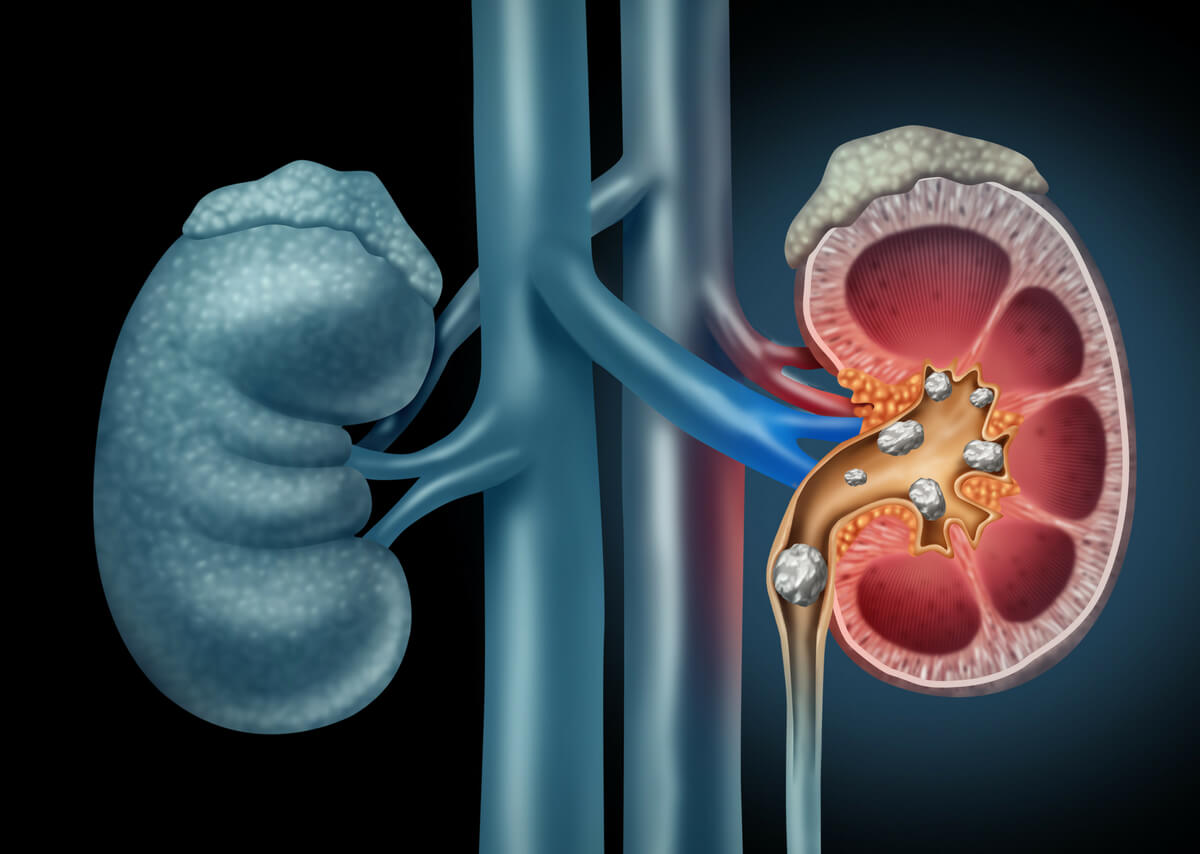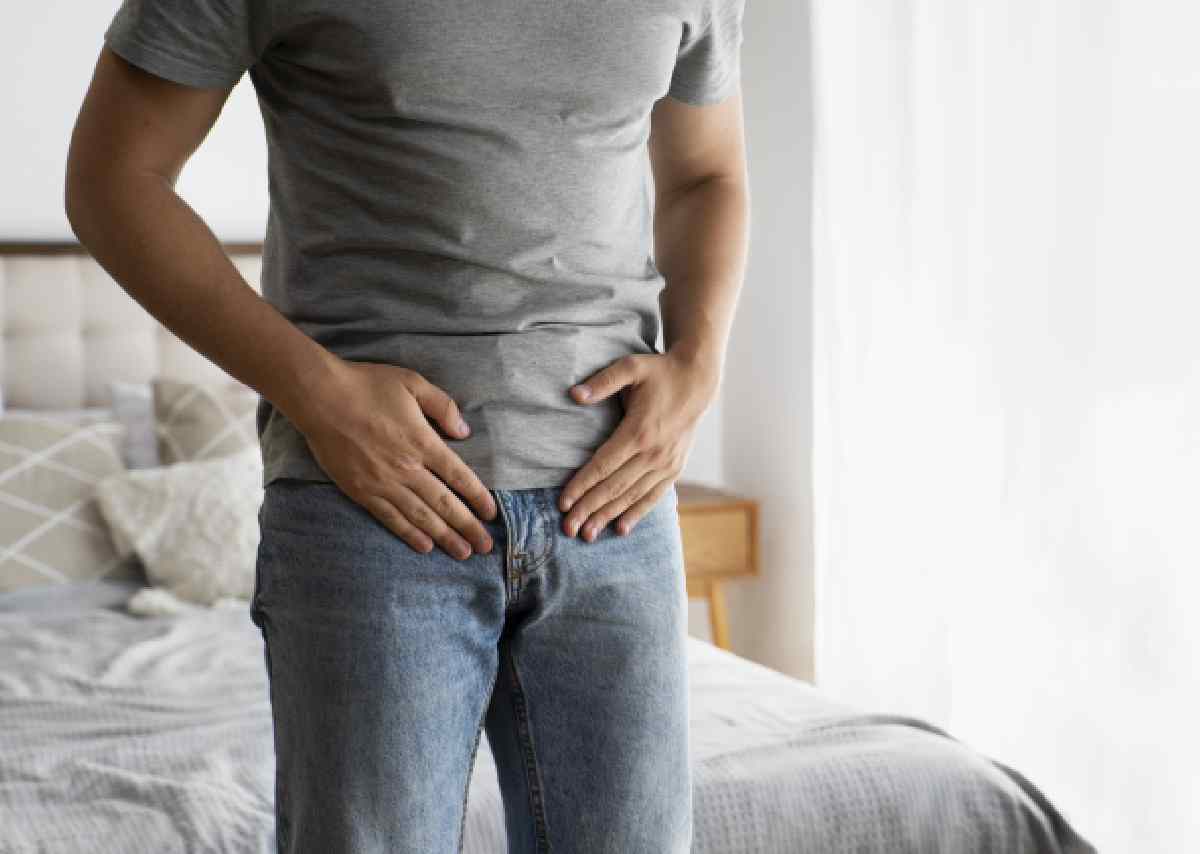Blog

The bean-shaped organs—Kidneys are responsible for extracting waste from the blood, balancing body fluids, forming urine, and carrying out other important bodily functions. The blood is filtered of salts, minerals, proteins, drugs and various other substances. At times these minerals and salts tend to get deposited inside the kidney leading to the formation of stones. These stones are composed of minerals such as calcium, calcium oxalate, uric acid, cystine, struvite, etc. The stones can vary in size from that of a small sugar crystal to as large as to occupy the whole kidney.
The signs and symptoms of kidney stones?
Small stones inside the kidneys rarely cause any trouble. However, when the stones get discharged out of the kidney into the thin tube that connects kidneys to the bladder to carry the urine (called ureters), they can be very painful. Some of the symptoms caused by stones are;
A) Pain in the abdomen, back or sides
The passage of stone from the kidney can lead to pain in your tummy or the sides of your tummy or even in the back. This happens because the stone in the tube prevents the urine to flow out freely leading to swelling and distention in the kidneys. Due to the stretch of the kidneys, the nerves get activated leading to pain. This pain can be experienced in the form of waves and can be very severe. The pain can be very intense and associated with nausea and vomiting. Pain can be relieved with medicines but at times requires emergency surgery if the pain is not relieved even with multiple doses of painkillers.
B) Frequent and urgent desire to urinate
When the stone has moved to the most distal part of ureter near the bladder, patients experience the symptoms of urgency and frequency. They feel like going to pass urine again and again and have the desire to rush to the toilet, however a very small quantity or just a few drops of urine come out.
C) Hematuria (blood in urine)
When the stone moves from the kidney into the tube or reaches the bladder some amount of bleeding can occur. The intensity varies from passing pink-colored urine to frank blood to the passage of clots.
D) Fever with chills
An impacted stone obstructs the outflow of urine. This can lead to infection in the urine. Initially one may notice the passage of cloudy or foul-smelling urine. Gradually, the infection can lead to fever associated with chills and rigors.
E) Painful micturition
A stone lodged in the ureter near its junction with the bladder can lead to pain in the inner sides of the stomach or while micturition. Also, a stone which has passed down from the kidneys into the bladder can cause pain while passing urine as well as intermittency ( start and stopping of urination). This is because the stone obstructs the outflow passage of the ureter.
F) Nausea and vomiting
The kidneys and the gastrointestinal system have common nerve connections. As a result, a painful stone can trigger GI symptoms leading to nausea and vomiting Why do the kidney stones form?
Why do the kidney stones form?
There is no single attributable factor to the formation of kidney stones. Simply put if there are more minerals and salts excreted in the urine produced by the kidneys than fluids, you are at risk for formation of kidney stones as these minerals (calcium oxalate, uric acid, etc.) tend to crystallize. Now, this can happen either if you drink insufficient water or if there is an excess of minerals or salts in the body. Some of the other causes of stone formation are:-
Obesity
Hyperparathyroidism: a condition in which parathyroid gland secretes excess hormone leading to high calcium levels in the body
Chronic dehydration
Post surgeries done for morbid obesity eg. Gastric bypass surgery
Family history of stone disease
People with dietary fads who consume excess of one kind of diet eg. a diet rich in animal proteins
Inflammatory bowel diseases
Certain medical conditions like gout, hypercalciuria, renal tubular acidosis, cystinuria, hyperparathyroidism, and urinary tract infection increase the risk of forming kidney stones.
Some medications such as a drug useful in treating HIV infection can cause kidney stones.
What are the different types of kidney stones?
Based on the analysis of stones that have been recovered post-surgery or collected from patients who have passed them spontaneously the kidney stones are differentiated based on their composition. The various types of kidney stones are:
Calcium stones: usually they are combined with oxalate and may be either calcium oxalate monohydrate or calcium oxalate dihydrate.
Uric acid stones: Usually found in people with high uric acid levels
Struvite stones: They are also known as infection stones as they are commonly found in people subject to recurrent urine infections. It is also known as triple phosphate stones they are comprised of magnesium ammonium phosphate.
Cystine stones: These stones are seen in people with a genetic disorder called cystinuria in which large amounts of the amino acid cysteine is excreted in the urine.
How do diagnose a kidney stone?
Based on your signs and symptoms your urologist may suspect the presence of kidney stones and may order certain tests to confirm the diagnosis.
1. Urine examination: This includes both the urine routine microscopy and culture examination. Urine routine tests provide information such as the pH of the urine (acidic or alkaline), the presence of red blood cells (an indication there may be stones), white blood cells suggestive of infection and the existence of crystals, etc.
The urine sample will show the presence or absence of infections. Also, this test is a must before any surgery to remove stones as no surgical procedure can be done if the urine is infected.
In cases of recurrent stones, 24-hour urine analysis is done along with blood tests to diagnose the cause of cyclical stones.
2. Blood tests: This includes kidney function tests to see the functioning of kidneys. Blood urea and creatinine levels give a fair indication of the functioning of the kidneys. Additionally, blood levels of calcium, phosphate, oxalate, uric acid, chloride, etc. provide useful information.
3. Radiological investigations: The gold standard investigation to diagnose kidney stones is a CT scan. A CT scan provides accurate information about the presence, number, and location of stones. It can also diagnose radiolucent stones, i.e. stones that are not visible on plain X-rays. Alternatively, one can also diagnose stones using ultrasound, plain x-rays, and IVP (intravenous pyelograms).
4. Stone analysis: This provides useful information regarding the composition of the stones and can be helpful in subsequent treatment.
How are kidney stones treated?
The treatment of kidney stones depends on their number, size, and location inside the kidneys. Smaller kidney stones may not require any treatment; with adequate water intake and regular exercise, people end up passing these small stones. In certain scenarios, medical intervention may be needed. Safe treatments for kidney stones:
1. PCNL (Percutaneous Nephrolithotomy)
This is a minimally invasive technique to remove kidney stones. Classically it is performed for stones bigger than 2 cm in size. Through a small (less than a cm) incision in the back, a tract is established between the skin and the kidney stone. Using a nephroscope the kidney stone is, then removed after breaking into smaller fragments. A DJ stent is placed inside the kidney and is removed after a week.
2. MINI PCNL
Mini PCNL and ultra mini PCNL are effective key hole surgeries because of the refined techniques and miniaturizing of instruments. This technique is used to remove stones as small as 7-8mm using small laser and probes.
3. RIRS (Retrograde Intra-Renal Surgery)
In this technique a flexible ureteroscope is passed all the way up into the kidney and stones are fragmented using a Holmium laser. The small fragments of stone are then basketed out. No cut in the skin is made during the procedure.
4. URS ( Uretero -Renoscopy)
It is a method to treat stones that are stuck in ureters using a hard ureteroscope which is as thin as a pen. The ureteroscope is made to pass through the urinary passage up to the kidney stones; stones are fragmented into small pieces using Holmium laser or a pneumatic lithoclast.
How to prevent the recurrence of kidney stones?
People who have kidney stones have a 50% probability of having stones again in 5 years. However, with some lifestyle and diet modifications, you can prevent the occurrence of stones at a regular interval.
1. Adequate water intake:- There is no fixed quantity or litres of water that is recommended. Fluid intake depends on a lot of factors such as the nature of work, the ambient temperature of your surroundings, how much one sweats, how active your lifestyle is. A rough guideline is that the color of urine should be the same as that of water. If it is dark yellow or brownish than water intake is less. One should aim to have at least two and a half to three litres of water every day.
2. Less salt (sodium) intake:- A diet rich in sodium pre-disposes you to stone formation because excess sodium increases calcium in the urine. The simplest way to do this is to avoid added salt in your diet, i.e. Avoid taking extra salt in your salads, curd, etc.
3. Limit proteins:- An excess intake of protein increases uric acid levels in the blood that in turn may lead to stone formation. This is especially true for people going to gyms who wrongly start consuming excess proteins. The good idea is to consult a nutritionist who can guide you regarding adequate protein requirement.
4. Adequate calcium:- A myth regarding stones is that by consuming calcium-rich foods or calcium supplements, you subject yourself to stone formation. On the contrary, a diet deficient in calcium predisposes one more to the stone formation as the body senses deficiency of calcium and starts conserving it more. Also, chances of forming oxalate stones increase in the absence of calcium.
All in all one should have adequate water intake with less added salt in the diet. A pearl of age-old wisdom to healthy eating applies well to patients of stones also—A little bit of everything with an excess of nothing.



